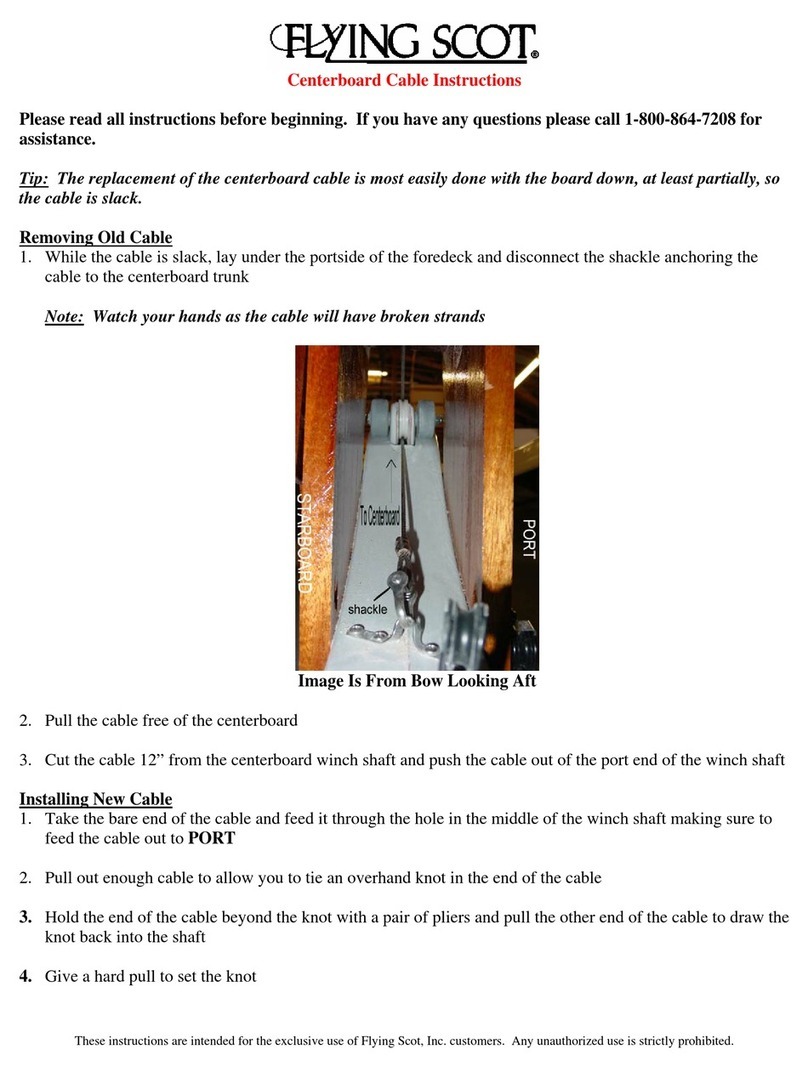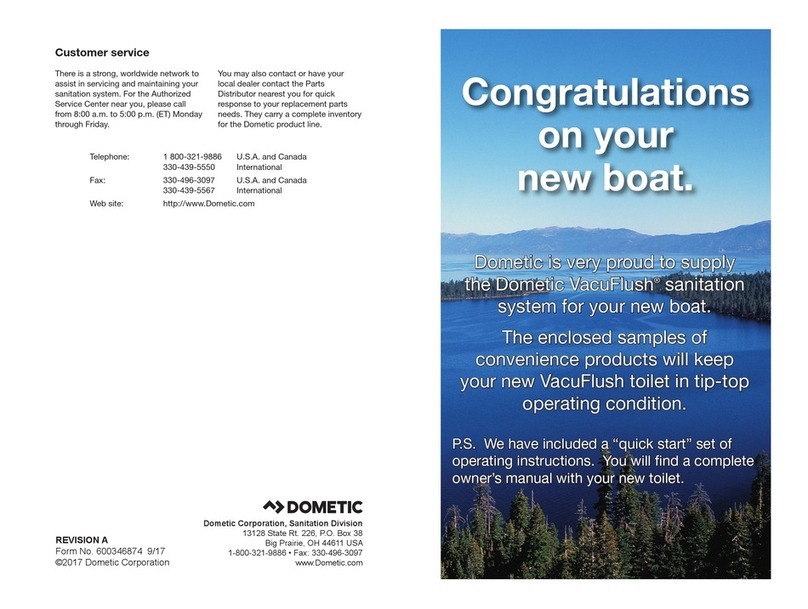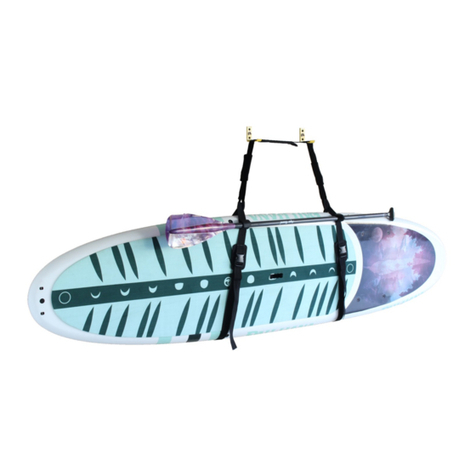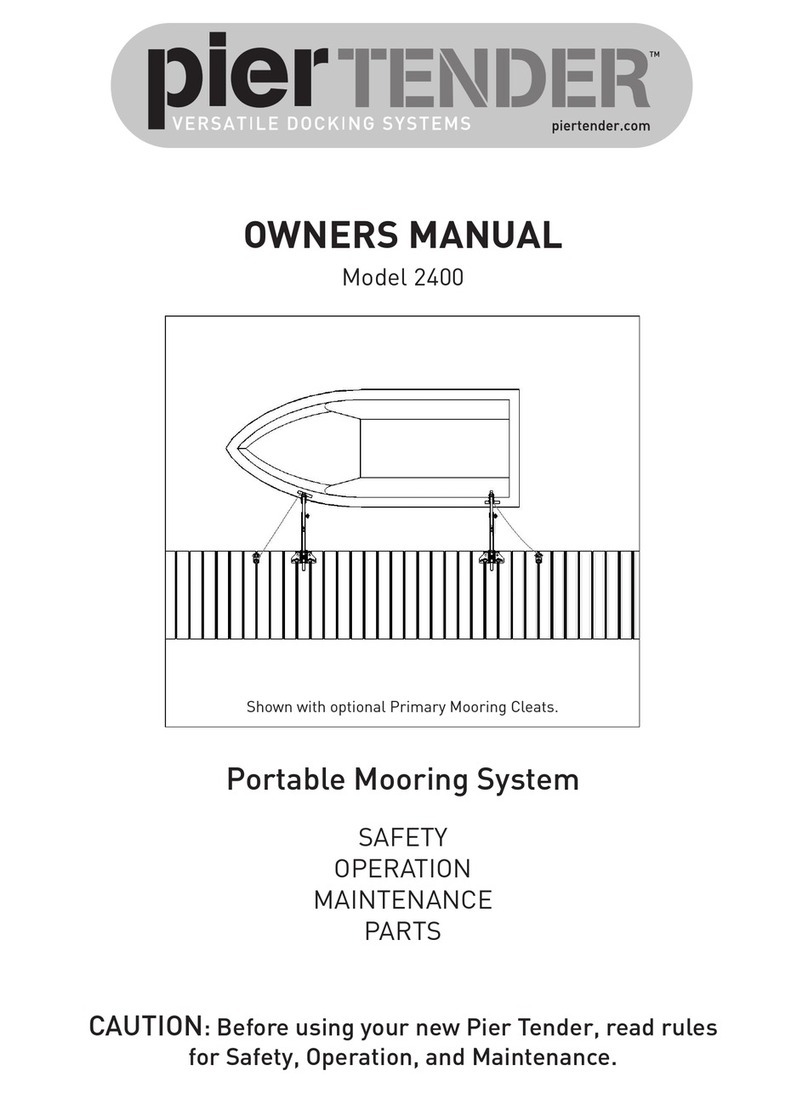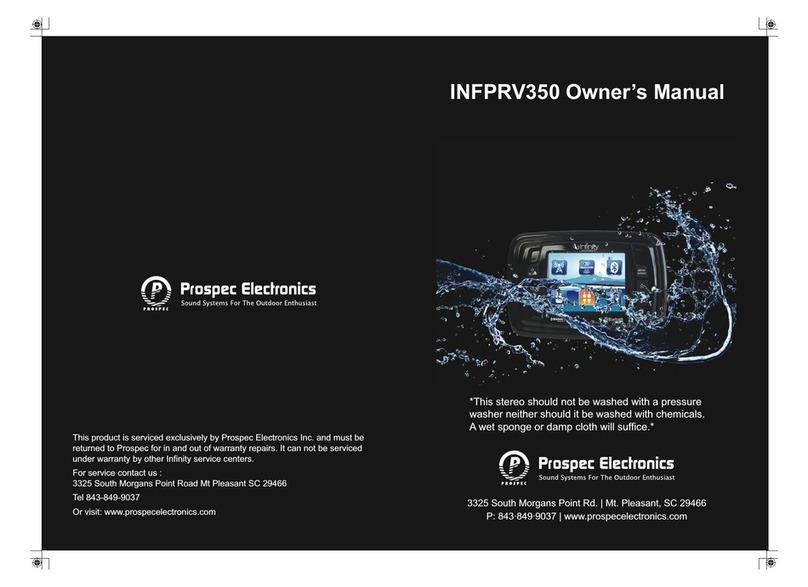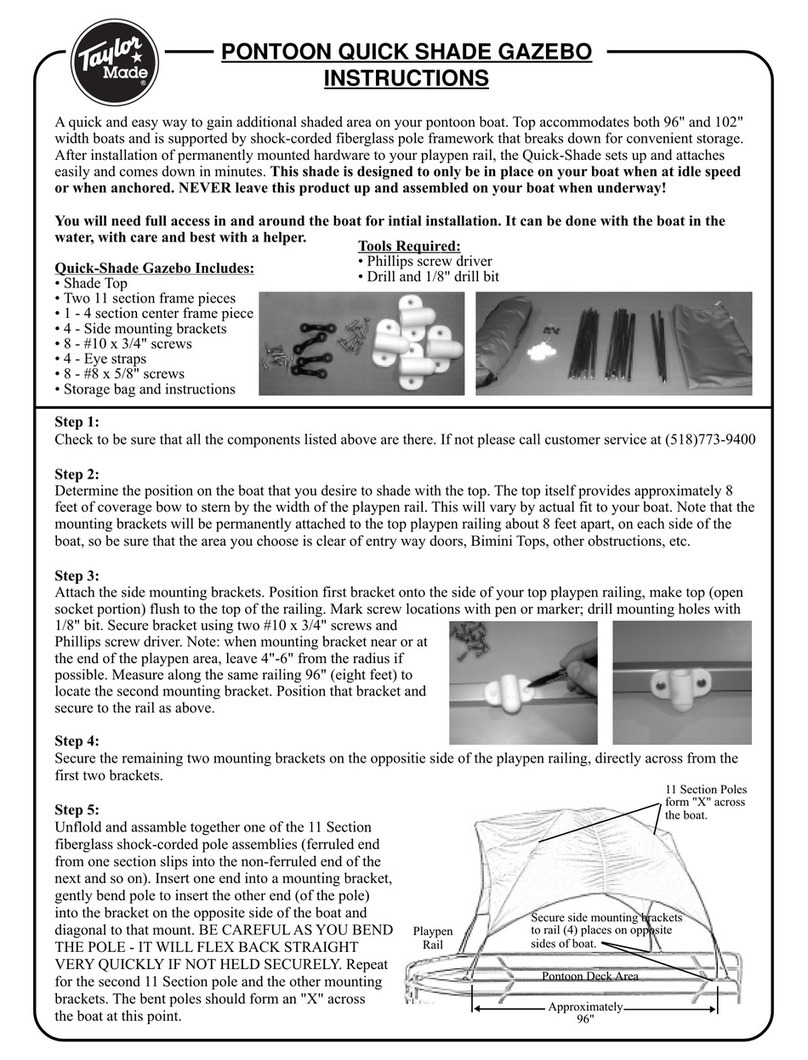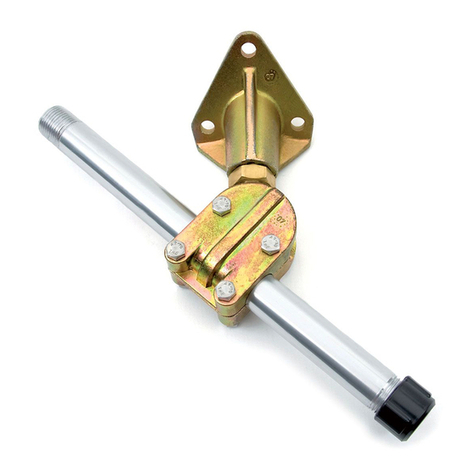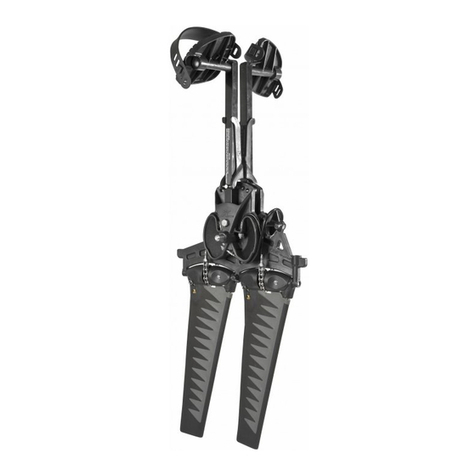GREEN INSTRUMENTS G16 User manual

G16
Smoke Density Monitor
Instruction Manual
Document ID number.: 02891

Page 2 of 46

G16 Smoke Density Monitor
Ver.2.4 – Revision March 2022 3
Contents
CONTENTS..............................................................................................................3
1INTRODUCTION...................................................................................................6
1.1 ABOUT THIS MANUAL ..........................................................................................................6
1.2 INQUIRIES AND FEEDBACK...................................................................................................7
1.3 ABOUT THE SYSTEM ...........................................................................................................7
1.3.1 System components .........................................................................................7
1.3.2 Optional components........................................................................................8
2SPECIFICATIONS.................................................................................................9
3SAFETY ASPECTS ............................................................................................11
4CONTROL AT DELIVERY.....................................................................................13
5INSTALLATION ..................................................................................................14
5.1 IN GENERAL.....................................................................................................................14
5.2 STANDARD INSTALLATION..................................................................................................15
5.2.1 Welding Sockets – Pre-alignment ..................................................................17
5.2.2 Support and Alignment Brackets (Optional) ...................................................17
5.2.3 Air modules, Transceiver and Reflector .........................................................18
5.2.4 Audit Module...................................................................................................18
5.2.5 Purge Air System............................................................................................19
5.2.6 Control and Monitoring Unit............................................................................20
5.2.7 Junction Box (Optional) ..................................................................................20
5.3 ELECTRICAL CONNECTIONS ..............................................................................................23
5.3.1 Control and Monitoring Unit............................................................................23
5.3.2 Junction box (optional) ...................................................................................23
5.3.3 Cable types.....................................................................................................23
6MENU STRUCTURE & CONFIGURATION...............................................................24
6.1 TRANSCEIVER ..................................................................................................................24
6.1.1 Transceiver Button Function...........................................................................24
6.1.2 Set Laser Aligning Function............................................................................25
6.1.3 Set Unit Address.............................................................................................26
6.1.4 Save New Settings .........................................................................................27
6.1.5 Calibration ......................................................................................................28
6.2 CONTROL AND MONITORING UNIT......................................................................................28
6.2.1 Home Menu ....................................................................................................29
6.2.2 Sensor Menu ..................................................................................................30
6.2.3 Alarm List Menu..............................................................................................30
6.2.4 Trend Menu ....................................................................................................34
6.2.5 Sensor Setup..................................................................................................34
6.2.6 System Setup .................................................................................................36
7CALIBRATION...................................................................................................38

Contents
Page 4 of 46
7.1 ZERO CALIBRATION .......................................................................................................... 38
7.2 AUTO SPAN CALIBRATION ................................................................................................. 38
7.3 SPAN CALIBRATION ..........................................................................................................38
8COMMISSIONING ..............................................................................................40
8.1 START OF THE SYSTEM..................................................................................................... 40
8.2 CALIBRATION................................................................................................................... 40
8.3 SETTING OF ALARM LEVELS .............................................................................................40
8.4 SETTING OF SIGNAL OUTPUTS ..........................................................................................40
9MAINTENANCE .................................................................................................41
10 TROUBLESHOOTING .........................................................................................42
11 SPARE PARTS..................................................................................................43

G16 Smoke Density Monitor
Ver.2.4 – Revision March 2022 5
Table of Figures
FIGURE 5-1: INSTALLATION OF THE G16 SMOKE DENSITY MONITOR 16
FIGURE 5-2: MOUNTING OF A SUPPORT AND ALIGNMENT BRACKET 17
FIGURE 5-3: MOUNTING OF AIR MODULE, AUDIT MODULE (OPTIONAL) AND TRANSCEIVER 18
FIGURE 5-4: MOUNTING OF AIR MODULE AND REFLECTOR 19
FIGURE 5-5: INSTALLATION OF THE CONTROL AND MONITORING UNIT 21
FIGURE 5-6: INSTALLATION OF THE JUNCTION BOX 22
FIGURE 6-1: TRANSCEIVER INTERFACE 24
FIGURE 6-2: ILLUSTRATION OF STRONG SIGNAL, NO OBSTRUCTIONS TO THE LIGHT BEAM 24
FIGURE 6-3: ILLUSTRATION OF WEAK SIGNAL, OBSTRUCTIONS TO THE LIGHT BEAM 25
FIGURE 6-4: ILLUSTRATION OF POOR AND GOOD ALIGNMENT 26
FIGURE 6-5: TRANSCEIVER ADDRESS SETTINGS 27
FIGURE 6-6: THE AUTOMATIC SPAN CALIBRATION ACTIVE AFTER ZERO CALIBRATION 28
FIGURE 6-7: AUTOMATIC SPAN CALIBRATION ACCEPTED 28
FIGURE 6-8: HOME MENU WITH 1 CONFIGURED SENSOR - SENSOR MENU 29
FIGURE 6-9: HOME MENU WITH 2 CONFIGURED SENSORS 29
FIGURE 6-10: ALARM LIST MENU 31
FIGURE 6-11: SELECT AN ALARM IN THE ALARM LIST MENU 31
FIGURE 6-12: ALARM INFO SCREEN - E.G, NOT ALIGNED ALARM 32
FIGURE 6-13: TREND MENU 34
FIGURE 6-14: PASSWORD POPUP WINDOW 35
FIGURE 6-15: SENSOR SETUP 35
FIGURE 6-16: SYSTEM SETUP 37

Introduction
Page 6 of 46
1Introduction
1.1 About this Manual
This manual contains data and instructions for the installation, operation, and maintenance
of the G16 Smoke Density Monitor.
The instructions are given in general terms and do not take into consideration a specific
installation. As such, the instruction manual is designed for the Opacity Monitor delivered
by Green Instruments A/S.
Note that each Smoke Density Monitoring System is configured at the factory ac- cording
to specifications. Therefore, it is important to study this manual and the Technical Draw-
ings for each system in their entirety for the installation, operation and maintenance of the
system.
The manual does not describe all possible situations, but only the most common and known
situations. It cannot replace the necessary education and training of the personnel. Should
situations not described in this manual occur that cannot be solved in accordance with
normal known practice and good workmanship, the operator should contact Green Instru-
ments A/S for instructions.
This manual does not claim to cover all details or variations in equipment or to provide for
every possible contingency that may arise during installation, operation, or maintenance.
Green Instruments A/S reserves the right to minor alterations and improvements owing to
developments without being obliged to enter the corresponding changes in this manual.
Green Instruments A/S reserves the copyright of the manual. Without prior written permis-
sion of Green Instruments A/S, the manual may not be copied and given to unauthorized
people
Attention
Before operation read all instructions and warnings within this manual and associated
documentation. Improper use may cause personal injury and/or damage of equipment
and may void the warranty.
Green Instruments A/S disclaims any responsibility for damage and/or injury caused
by improper installation, use or maintenance of the equipment.

G16 Smoke Density Monitor
Ver.2.4 – Revision March 2022 7
1.2 Inquiries and Feedback
All claims and inquiries for spares shall be addressed to Green Instruments A/S or our
distributors. In all correspondence or when ordering spare parts, please carefully state the
equipment type and serial number, which can be found on the label on the equipment.
Green Instruments A/S appreciates all feedback and suggestions for improvement. If any
questions appear or any discrepancies can be found in this manual, kindly contact Green
Instruments:
Green Instruments A/S
Erhvervsparken 29
DK-9700 Brønderslev
Denmark
Phone: +45 9645 4500
Fax: +45 9645 4501
Email: [email protected]
Web: www.greeninstruments.com
1.3 About the System
1.3.1 System components
As a standard configuration, the G16 Smoke Density Monitor consists of the following
standard elements:
Control and Monitoring Unit (HMI)
The control and monitoring unit is arranged with a touchscreen, connection terminals and
cable glands. The control and monitoring unit can be configured to monitor up to 2 trans-
ceivers.
Transceiver/Reflector Unit
•A G16 Smoke Density Monitor can be configured with up to 2 Transceiver/Reflector
Units. Each transceiver/reflector unit consists of:
•A G16 transceiver module assembly, which contains the laser source, optical compo-
nents, electronics, and data processing capacity. The transceiver controls and shapes
the laser beam projected across the measuring area to the reflector assembly and
measures the light attenuation when the light is reflected.
•An air module, which provides a purge air boundary between the process and the opti-
cal area and serves two main purposes: (i) Avoiding soiling of the optical parts from
the exhaust gases. (ii) Thermal protection of the instrument against exhaust gases.

Introduction
Page 8 of 46
•The air module is arranged with purge air supply connection and flow control valve for
optimal airflow adjustment.
•A sealing air system including 9m purge air hose and a purge air distributor.
•A G16 reflector module assembly, which contains a precision reflector to direct the
light beam back to the transceiver assembly.
•A connection cable of 15 m for connection between the transceiver and the control and
monitoring unit.
•Two welding sockets 1” for the transceiver and the reflector assemblies.
Download the product certificates at https://greeninstruments.com/
1.3.2 Optional components
•Junction box (JB): if the connection cable between the transceiver assembly and the
control and monitoring unit is required to be more than 15 m, there shall be a junction
box to support the connection between the transceiver and the control and monitoring
unit.
•Audit Module Assembly Audit targets
•Sealing air compressor with filter
•Extended monitoring system supporting up to 16 transceivers

G16 Smoke Density Monitor
Ver.2.4 – Revision March 2022 9
2Specifications
Control and Monitoring Unit
Display
Opacity level [%]
Accuracy
Better than 2 % of full scale
Precision
Better than 2 % of full scale
Power supply Input
24 VDC –2 A (optional: 100–240 VAC –50/60 Hz –
1.4 A)
Communication
Modbus TCP/IP
Analog Output
2 x 4…20 mA max. 500 Ω - active & linearized
Alarm relay outputs
4 x alarm relays Potential free. Imax = 3A. Umax =
250VAC
Alarm levels
Alarm level is configurable
Warning level is automatic set at 50% of the alarm level
Alarm delay
Default 0 s (programmable 0–1800 s)
Ambient temperature
0°C –55°C
Dimensions/weight
H×W×D: 300 × 200 × 150 mm / 5.5 kg
Enclosure
IP 65 Steel box, AISI 1008, painted RAC 7035
Recommended minimum
cable size
Power supply: 3 × 1.5 mm² shieldedcables
Signal cable: 2 × 1.0 mm² twisted pair shielded
cables Alarm cable: 4 × 1.0 mm² shielded cables
Network cable: Cat5e
Transceiver incl. Air Module
Measurements
Opacity
Measuring principle
Transmission dual pass
Measuring range
0 –100% Opacity
Scanning distance
0.5 to 10.0 m
Power supply
24 VDC +/- 10%
Purge air supply
5-10 NLPM. Air quality to meet ISO 8573-1 Class 3
Flue gas temperature
Above dewpoint up to 460°C
Flue gas pressure
-500 to + 500 hPa

Specifications
Page 10 of 46
Ambient temperature
0°C –55°C (Class A)
Vibration Class
B
EMC Class
A
Enclosure Class
B/IP 66
Dimensions & weight
OD 75 mm, length 220 mm, 1800g
Reflector incl. Air Module
Purge air supply
5-10 NLPM. Air quality to meet ISO 8573-1 Class 3
Flue gas temperature
Above dewpoint up to 460°C
Flue gas pressure
-500 to + 500 hPa
Ambient temperature
0°C –55°C (Class A)
Vibration Class
B
Enclosure Class
B/IP 66
Dimensions & weight
OD 75 mm, length 143 mm, 1500g
Optional Equipment
Sealing/purge air compressor
Support and alignment brack-
ets
Support and alignment brackets
Audit module
Audit module
Audit targets
Audit targets
Visualization, recorder, and
data logging
Visualization, recorder and data logging
Remote digital display for
panel mounting
Remote digital display for panel mounting
Approvals and Certificates
Download all product certificates at https://greeninstruments.com/
Specifications are subject to changes without notice.

G16 Smoke Density Monitor
Ver.2.4 – Revision March 2022 11
3Safety Aspects
Before installing the system, please study the Installation Manual in its entirety.
WARNING
Follow the installation and operating instructions! Please read the instructions carefully in
its entirety before working on the system.
Hazardous voltage!
Disconnect the power before installing or servicing the equipment. Ignoring this warning
can result in severe personal injury or material damage. Read the instruction carefully to
ensure correct connection of all power and signal leads.
Make sure that the correct voltage is connected to the system.
Circuit breaker!
The installation must include a means of isolating electrical power by a clearly marked
switch or circuit breaker external to the system. The external switch or circuit breaker shall
be in close proximity to the system and within easy reach of the operator.
Overload protection!
For compliance with the safety requirements IEC 61010-1 (2010), the installation must
include a means of overcurrent protection to provide protection against excessive energy
being drawn from the power supply system in case of a fault in the equipment.
Protective earth!
The system must be connected to protective earth.
Installation and fault finding!
Electrical installation and fault finding on the system should only be undertaken by a suit-
ably trained and qualified engineer.
Warning Laser Hazard
Visible laser radiation. When the transceiver operates in pulsed mode, the laser is classified
as Class 1, which is safe under all conditions of normal use. When it op- erates in the
continuous mode (i.e. there is a steady light beam in the aligning mode), the laser is clas-
sified as Class 3R. Thus, please avoid eye exposure to direct or scattered radiation when
the transceiver operates in the continuous mode.

Safety Aspects
12
Symbol Identification
Caution, risk of danger
Protective earth
Caution, risk of electrical shock
The CE mark proves the compliance
of the instrument with the require-
ments of the relevant EU directives
Warning Laser Hazard. Visible laser
radiation! Avoid eye exposure to di-
rect or scattered radiation
Caution, hot surface

G16 Smoke Density Monitor
Ver.2.4 – Revision March 2022 13
4Control at Delivery
All products of Green Instruments A/S are individually checked throughout and carefully
packed.
Check the equipment upon arrival, ensuring that the equipment has been transported
properly.
Check for the absence of any damage. If these are noted, immediately make a note on the
delivery document. Remove the packing and check for intrusive water or signs of humidity.
Check for missing part against the packing list. Any discrepancy or damage should be re-
ported to the Green Instruments A/S immediately.

Installation
14
5Installation
Read this chapter in its entirety before installing the system
5.1 In General
To avoid possible damage to the equipment or errors in the monitoring readings and alarm
function, it is important to observe the following points carefully:
•The system is not to be used without purge air. Doing so might result in monitoring
errors or equipment failure.
•The transceiver and reflector modules must be placed in areas with low vibration and
with ambient temperatures below 55°C. The location must be suitable for service and
cleaning.
•The transceiver and reflector with air modules are screwed on the welding sockets
welded to the gas uptake in the selected location. The transceiver and reflector must be
properly aligned and mounted firmly and stable direct oppo- site each other. Take con-
sideration of the minimum distance between any walls or construction elements to the
cabinet. Please refer to the system installation layout in the technical drawings to see
the allowed minimum distance.
•The transceiver and reflector must be protected against mechanical damage.
Caution
Installation and operation of the G16 Smoke Density Monitor and associated equip-
ment must be carried out by skilled personnel. Green Instruments A/S does not take
any responsibility of the operation of the system and associated equipment whatsoever.
The equipment must only be applied as specified by Green Instruments. If the equip-
ment is used in a manner not specified by Green Instruments, the protection provided
by the equipment may be impaired.
The successful and safe operation of this equipment is dependent upon proper han-
dling, installation, operation, and maintenance.

G16 Smoke Density Monitor
Ver.2.4 – Revision March 2022 15
5.2 Standard Installation
The Monitoring Unit can be configured with up to two sets of transceiver/reflector units.
The installation of each monitoring point is similar to each other. Figure 5-1 illustrates the
installation of a system with only one transceiver/reflector unit.
The transceiver and reflector are to be aligned opposite each other in such way that the
light beam from the transceiver has an unrestricted path to the reflector. See Figure 4-5 a
beam illustration when correctly installed.
For accurate measurement, it is important to place the transceiver and the reflector at a
straight section of the duct where the flow is laminar. This means that there should be a
distance of at least three duct diameters to the nearest upstream bend and a distance of at
least one duct diameter to the nearest downstream bend and minimum 10 duct diameters
to the engine, turbocharger or boiler

Installation
16
Figure 5-1: Installation of the G16 Smoke Density Monitor

G16 Smoke Density Monitor
Ver.2.4 – Revision March 2022 17
5.2.1 Welding Sockets –Pre-alignment
The transceiver and reflector with air modules are installed on 200 mm long 1” socket
pipes that are welded onto each side of the stack wall. It is recommended to shorten the
welding sockets to match the thickness of the isolation to increase the stability of the in-
stallation. The welding sockets are of ordinary mild steel. Stability is best achieved by
inserting the welding socket approximately 10 mm into the Ø35 mm hole made in the
stack. This also helps preventing condensate from entering the socket pipe.
Special attention must be given to the alignment of the sockets, so that they are precisely
aligned opposite each other. For pre-alignment, it is recommended to use a guiding pipe
with maximally Ø27 mm outer diameter The guide pipe should be approximately 500 mm
plus stack diameter. This is to be inserted through the 2 x Ø35 mm holes made for the
welding sockets. The welding sockets are then slid onto the guiding pipe and then the sock-
ets are welded to the stack/duct wall see Figure 5-1.
After spot welding the socket pipes, be sure to check for any misalignments. When this is
ensured the welding procedure can be completed in accordance to Figure 5-1.
5.2.2 Support and Alignment Brackets (Optional)
In case of walls with thickness less than 6 mm, use the support and alignment brackets
(part no. 02979). After completing the welding of both sockets, the guide pipe or rod can
be removed, and the support and alignment brackets can be mounted and welded in posi-
tion with the socket in center see both Figure 5-1 and Figure 5-2.
Figure 5-2: Mounting of a support and alignment bracket

Installation
18
5.2.3 Air modules, Transceiver and Reflector
After completing the welding of the sockets and the support and alignment brackets, the
air modules can be mounted onto the welding sockets. To avoid gas leaks, it is recom-
mended to use e.g. Teflon thread tape in between. Fix the air module in position with the
lock screw. Normally the best position is with the purge air supply connection facing down.
After completing the mounting of the air modules, the transceiver and reflector can be
mounted on each side of the stack. The transceiver and reflector module are then secured
by tightening the ring nut.
5.2.4 Audit Module
The audit module is an optional item that enables the user to validate the performance of
the monitoring system e.g. in relation to demonstration of compliance requested by au-
thorities. Only one audit module is needed for each set of transceiver/reflector. The audit
module can either be mounted on the transceiver side or the reflector side, however it is
important to have easily access to the audit module. The audit module is designed to fit in
between the air module and the transceiver/reflector as shown on Figure 5-3 & Figure 5-
4.
Figure 5-3: Mounting of Air Module, Audit Module (optional) and Transceiver

G16 Smoke Density Monitor
Ver.2.4 – Revision March 2022 19
Figure 5-4: Mounting of Air Module and Reflector
5.2.5 Purge Air System
Purge air is connected via the non-return valve, air distributor, and hoses to both air mod-
ules. A sealing air kit (part no. 00031) includes the necessary parts.
The purge air consumption is approximately 10-20 NLPM for each set of transceiver/re-
flector. The purge air quality must meet ISO 8573-1 Class 3. Appropriate air cleaning
and/or drying systems can be fitted to meet ISO 8573-1 Class3. When using instrument air,
the optional air supply filter regulator (part no. 31021) must be always used to even out
variations in pressure.
As an alternative to instrument air an optional sealing air compressor can be provided (part
no. 01259).
For stacks and ducts with a negative pressure at all loads, it is possible to use the passive
air purge principle. This means that the purge air connection is simply connected to an air
filter which allows the negative pressure inside the stack/duct to draw in a constant flow
of ambient air and thus, providing a purging effect. However, make sure that the air still
meets ISO 8573-1 Class 3. Otherwise, the lenses will be quickly fouled.
We recommend the use of an optional flow meter (part no. 31022) to adjust the flow control
screw at the purge air connection of the air modules. Flow adjustment is essential since too
much air flow will affect the effective light path length as it blows the flue gas out of the
detection area. Too little air flow will lead to increased fouling of the lenses and could lead
to intolerable temperature rises.

Installation
20
5.2.6 Control and Monitoring Unit
The control and monitoring unit handles up to two (2) sets of transceiver/reflector units. It
is recommended to install the control and monitoring unit in an easily accessible location.
The information of the control and monitoring unit relevant for installation is provided in
Figure 5-5.
5.2.7 Junction Box (Optional)
The junction box is an optional item used in cases where the cable between the Control
and Monitor unit and the Transceiver exceeds 15 meters and/or in cases where multiple
transceivers are daisy chained together. If the scope of supply includes a junction box, the
junction box is pre-mounted with a connection cable for easy connection to the transceiver.
The information of the junction box relevant for installation is provided in Figure 5-6.
Table of contents
Popular Boating Equipment manuals by other brands
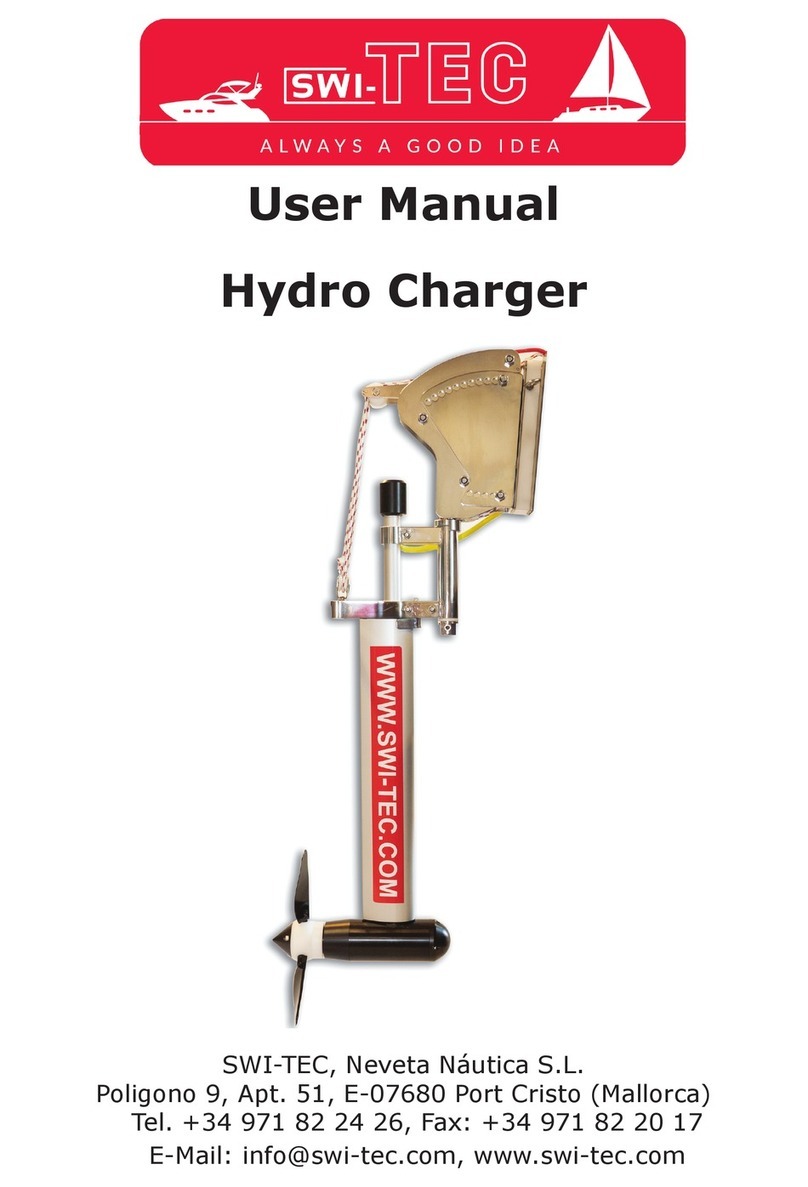
SWI-TEC
SWI-TEC Hydro Charger user manual
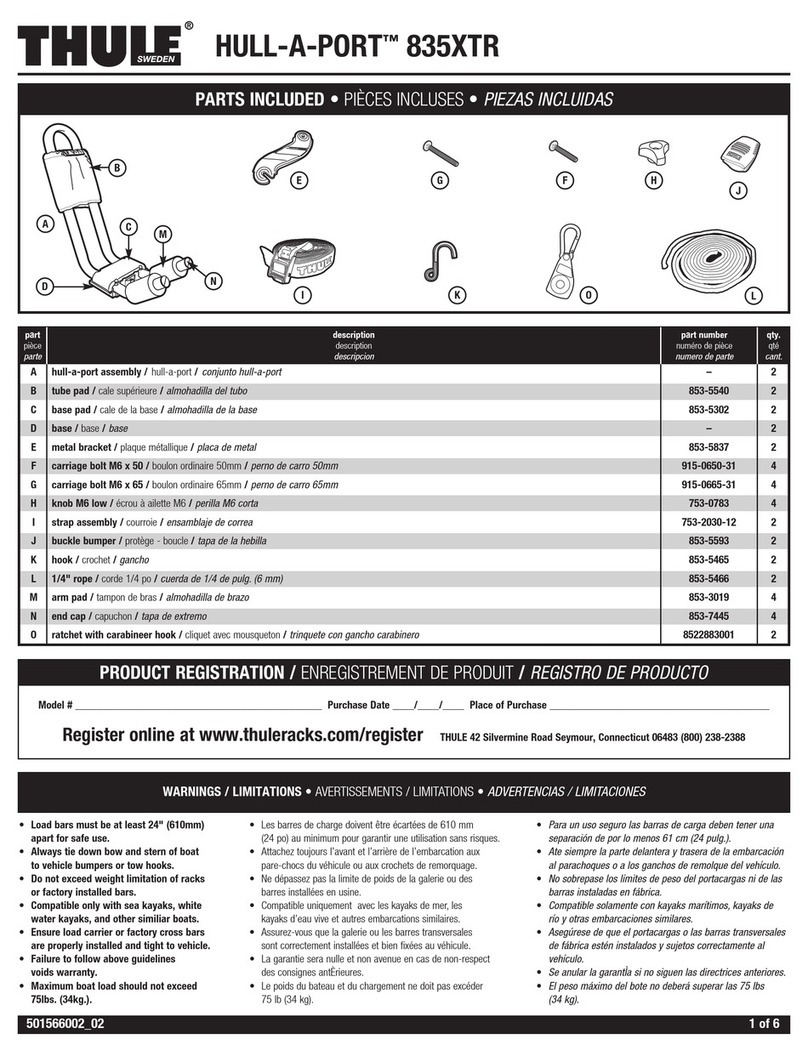
Thule
Thule HULL-A-PORT 835XTR instruction manual

Tele Radio
Tele Radio Tiger Shark Manual and installation instructions
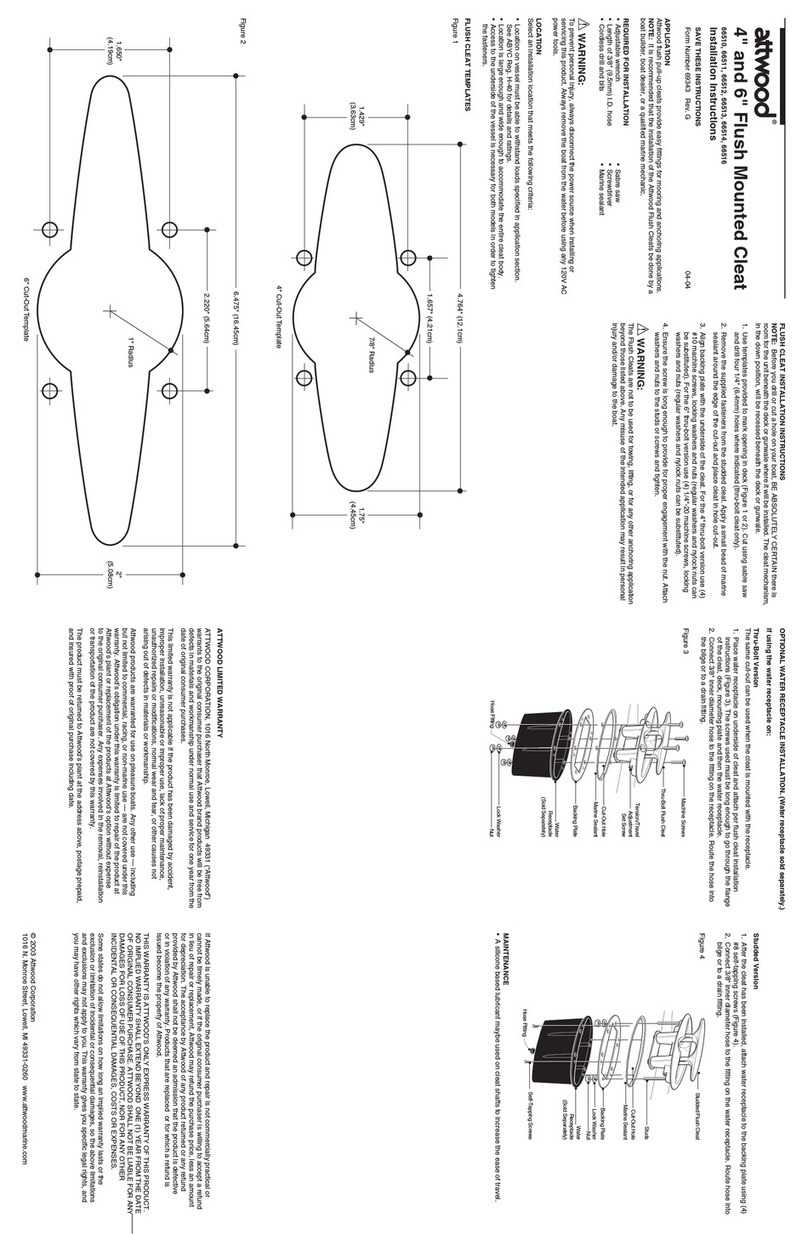
Attwood
Attwood 66510 installation instructions

Seamax
Seamax Reborn Pro3 installation guide
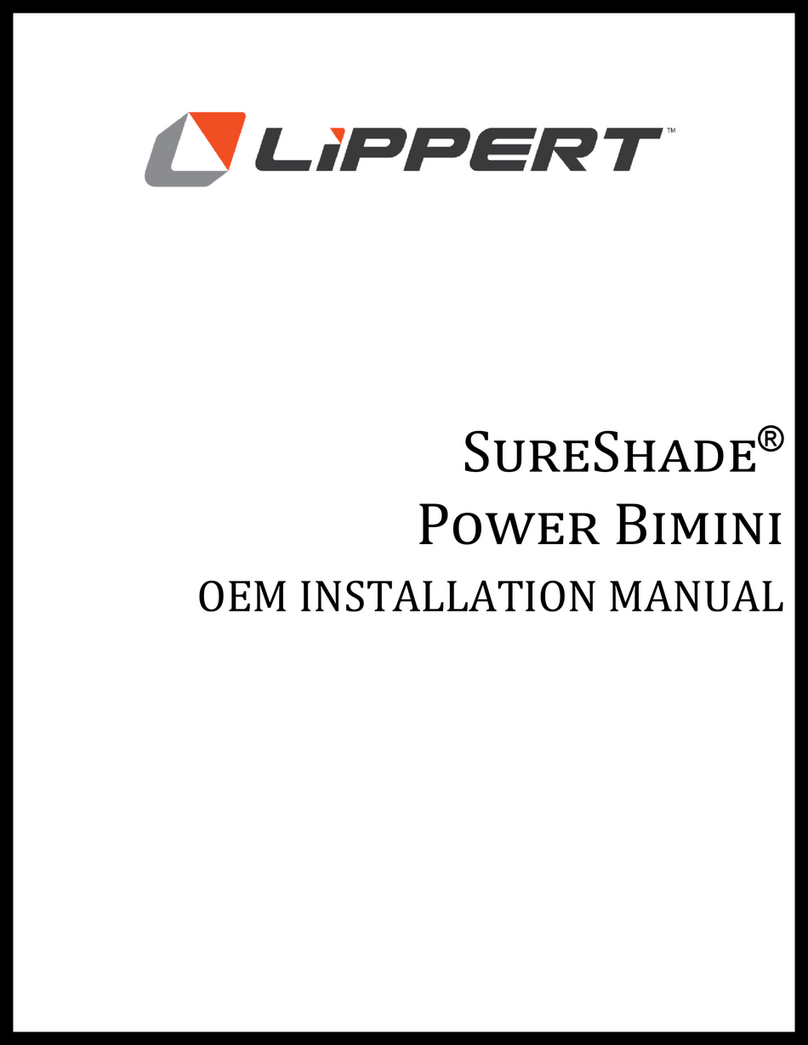
Lippert
Lippert SureShade Power Bimini installation manual

